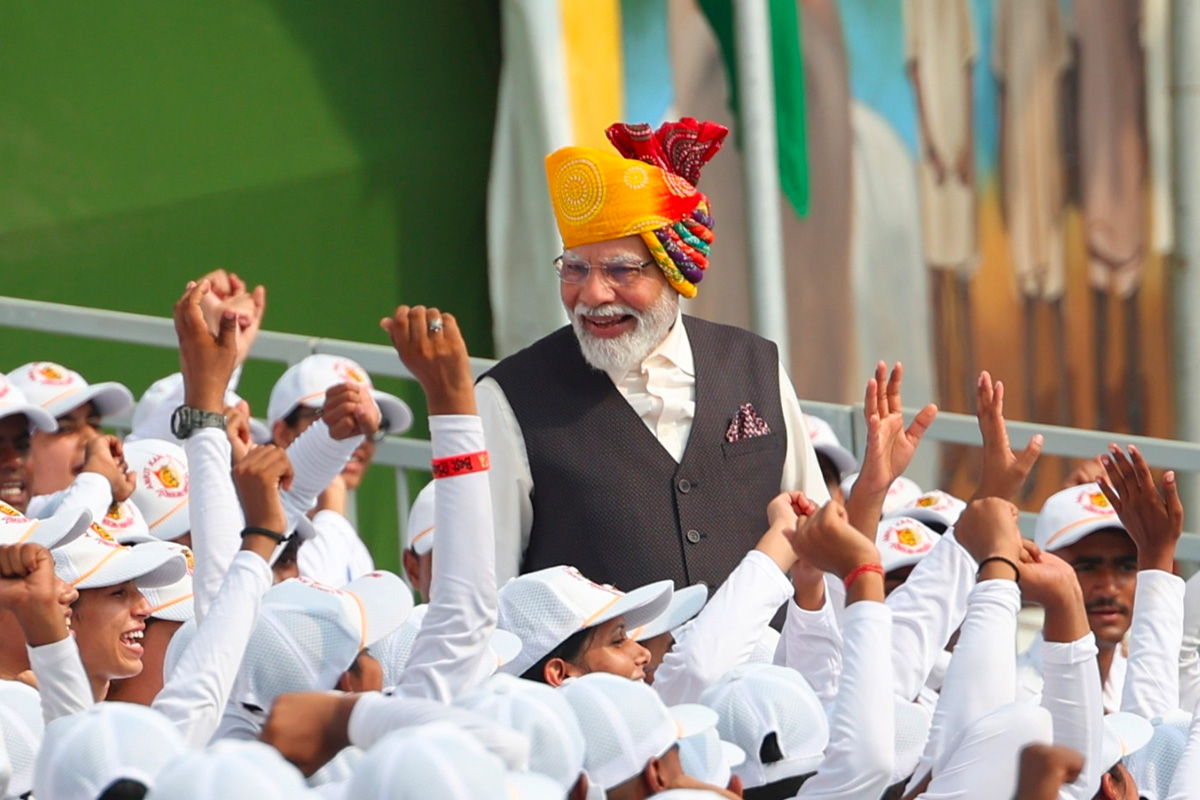In his Independence Day speech from the iconic Red Fort, Prime Minister Narendra Modi caught the nation’s attention by addressing the citizens as ‘Mere Parivarjan,’ which translates to ‘my family members’. It made a lot of people on both sides of the political divide sit up and take notice. The annual Red Fort address holds immense significance in India’s political landscape, and this year’s speech held particular intrigue as it is the last before the impending Lok Sabha elections next year.
Should Modi win again, he will join the ranks of only Indira Gandhi and Jawaharlal Nehru winning a third term as prime minister. In this context, he sought to carve a distinct narrative, especially in light of the opposition’s efforts to unite under the newly formed I.N.D.I.A coalition. ‘Parivarjan’ could potentially serve as this differentiating factor. Modi’s appeal to the family sentiment is not a mere fleeting moment but a strategic move within his political playbook. Expect to encounter more of this in the days ahead.
ALSO READ: Kashmir’s Independence Day celebrations come full circle
Now, the question arises: Why is it necessary and how is it going to help him? By now, it is well-known that the prime minister has kept his family at a distance from the corridors of power, a fact often mocked by the Congress and certain self-assured “influencers” on social media. However, the common Indian perspective differs. They perceive this as a testament to his dedication and his commitment to serving the nation. This viewpoint is strongly shared by the underprivileged, particularly women, as evident from conversations in the hinterlands.
Contrast this with the opposition parties sheltered under the coalition’s umbrella. With the exception of the Left parties, each of these entities (such as Congress, TMC, NCP, National Conference, RJD, Samajwadi Party, DMK, and others) are essentially family-run political outfits. While the Aam Aadmi Party (AAP) might seem to diverge from this trend, recent developments raise questions about its future trajectory.
ALSO READ: USA’s strategic drubbing in Ukraine could pose challenge for India
Political analysts should brace for an extended match in which ordinary citizens are reminded that for opposition leaders, the interest of the family often comes first, followed by the party. PM Modi would argue that his true family encompasses the 1.4 billion Indians he serves. He tends to their needs just as a family would – from ensuring access to clean cooking fuel, maternity benefits, healthcare, and loans, to facilitating electricity, housing, and infrastructure for improved growth prospects. By outlining an agenda for 2047, he has conveyed the sense of responsibility a family elder holds in securing the family’s future – a narrative seamlessly aligning with Modi’s Parivar concept.
Granted, there are a few political allies within the NDA who are also family-run entities. However, it is universally understood that the locus of decision-making rests firmly with PM Modi. The likelihood of figures like Jitan Majhi or Omprakash Rajbhar wielding substantial influence, even within their limited domains, remains slim.
Consequently, the ongoing tussle between ‘parivarvad’ (dynastic politics) and ‘parivarjan’ (public service) alongside the resolute battle against corruption and appeasement could shape the overarching narrative leading up to the 2024 Lok Sabha elections. The state elections later this year could function as pivotal chapters within this gripping five-act contest. Buckle up, it promises to be a riveting political spectacle!
(This article has been written by Smita Mishra, a Delhi-based bilingual journalist who specializes in politics and current affairs.)
Disclaimer: Opinions expressed are the author’s own.









